(Cross-posted @ CloudAve)

NetSuite vs SAP … Round #n. A Game Changer?
 In my recent Suites post I said there were exactly 1.5 (one and a half) integrated full business solutions (SaaS Suite, SaaS All-In-One, SaaS ERP, SaaS SMB ERP – take your pick or create a new one) offered as a service. The one in that equation was NetSuite, and the half is SAP’s Business ByDesign.
In my recent Suites post I said there were exactly 1.5 (one and a half) integrated full business solutions (SaaS Suite, SaaS All-In-One, SaaS ERP, SaaS SMB ERP – take your pick or create a new one) offered as a service. The one in that equation was NetSuite, and the half is SAP’s Business ByDesign.
The half is getting close to becoming full, bringing the total number of solutions to two. SAP’s ByD, originally launched in 2007 was a functionally rich solution already at launch – in fact I called it the most complete SaaS Suite not available customers. And therein lies the rub. Functionally rich, but a phantom product that only a few selected early customers could get their hands on. And it wasn’t simply a marketing / segmentation blunder as some analyst thought, it was all about architecture: SAP missed out on the economics of multi-tenancy, and realized they could not profitably operate and scale what they referred to as “mega-tenancy” – so they went back re-architecting ByDesign.
The lost 2 1/2 years were a gift to competitor NetSuite, and they milked it every possible way. SAP announced entry to the SaaS SMB space validated their market, and their own delay was an open invitation to NetSuite. As CEO Zach Nelson said at their recent earnings conference:
I’d like to thank SAP for being our IBM.
NetSuite never shied away from aggressive marketing (I guess that’s the Oracle blood in their veins), starting from pranks like the SAP for the Rest of Us Party during SAPPHIRE 2006 to staging a shootout at the anti-SAP Conference or releasing edgy videos a’la Mac vs Windows. But the biggest coup, one with definite gains was the Business ByNetsuite program which we covered here:
The aptly named Business ByNetsuite program guarantees at least 50% savings to current SAP R/3 customers relative to – watch this! – the annual maintenance fees they are now paying to SAP. Yes, it’s not a price-to-price comparison. With the perpetual licence model customers pay upfront, but are still forced to pay annual maintenance fees – with SaaS there is only a subscription fee, and now NetSuite proves it can be half of only the maintenance component of traditional software’s TCO.
Yes, NetSuite took deals from SAP and of course amidst all the chest-thumping they did not particularly emphasize the fact that that these were often divisional deals: smaller divisions of large companies, often replacing legacy systems as a result of an acquisition with the parent company running SAP. NetSuite even developed NetSuite-to-SAP connectors for enterprise reporting, fully recognizing they won’t be replacing SAP on the corporate level.
Now of course these were relatively easy wins when NetSuite was the only game in town – and that’s about to change, as SAP is getting ready for General Availability of a new Business ByDesign in July. And SAP CEO Bill McDermott fired a few salvos over to NetSuite in his announcement, as quoted by Reuters:
McDermott said he believes Business by Design’s sales will be able to quickly surpass those of NetSuite, which last year posted $167 million in revenue.
“When Business by Design is coming at them like a 99-mile-an-hour fastball, let’s see how tough they are,” McDermott said of NetSuite.
Winning against SAP when they had no relevant SaaS offering was one thing, going up against a functionally strong product will be another. NetSuite is changing tone, comparing the two offerings, as show by this slide I received from NetSuite:
This must be the first time SAP finds themselves on the wrong side of the David vs. Goliath equation (or is it the elephant vs flea? – but who is the elephant and who is the flea in the long run?). I have an issue specifically re. the functional shootout, which was rigged at best.
As for the rest of the comparisons, a fair summary is that neither side is a newcomer. SAP is the granddaddy of business processes with 30 years of experience, but they are new to operating / scaling a cloud environment – something NetSuite has a head start on them.
I have reasons to believe (more on that in another post) ByD will not be a failure this time around, and NetSuite will have to adopt to competing with a real product vs. a phantom. It will be a healthy change, with customers now having a choice of (at least) two well integrated SaaS offerings. In the end, customers win.
(Keep an eye open for the next post on ByD and beyond…)
(Cross-posted @ CloudAve)

The Care and Feeding of Industry Analysts – Take Two
 Some analysts (?) spammers just won’t learn. I ridiculed this “research report” a few months ago (quoting old post below):
Some analysts (?) spammers just won’t learn. I ridiculed this “research report” a few months ago (quoting old post below):
The Care and Feeding of Industry Analysts
The Top 10 Questions The Care and Feeding of Industry Analysts Will Answer For You Include:
1. What are the ten deadly sins NOT to commit when working with an industry analyst firm?
2. What are the typical characteristics of an industry analyst that will enable you to more effectively work with them?
3. As a vendor, when should you be humble and when should you position yourself as an expert?
4. Does subscribing to an analyst’s research improve coverage of your products or company?
5. How is a research briefs created and what impact can a vendor have on its content?
6. What are the three highest-level benefits you can enjoy from an effective analyst relations approach?
7. How can you best capitalize on industry analyst ‘rules of engagement?’
8. Precisely what homework must you do before you brief an analyst?
9. How do vision and ability to execute relate to how an analyst sees your company?
10. During a briefing, how do CEOs, VPs of sales, PR firms and VPs of marketing impact how an analyst sees your company?The actual report (PDF) costs EUR 316. Is it worth? I leave it up to you … but I promised entertainment. Look at the other “research” this paper is associated with:
Customers who bought this item also bought
Chinese Markets for Baby Care Products
Toilet Care Products – United Kingdom
Surface Care – United Kingdom
Chinese Markets for Laundry Care Products
Hair Care in the US
Laundry Care – United States
Long-Term Care Market Review 2006
The Future Of Personal Care OccasionsWow.. .I especially love the pairing of Toilet, Laundry and Analysts 🙂
I thought I had originally made it quite clear I wasn’t exactly a fan of this puff piece. Apparently one person did not quite “get it” – today I received an email offer from the original sender to buy the same study, for the same price.
Fuhgeddaboudit. And stop spamming me, Amy Cole.
(Cross-posted @ CloudAve)

OpenDNS? Google DNS? Comcast? Surprising Results.
I’ve been a long time OpenDNS user (hardcoded in my router), but after installing a new router, I decided to run some tests before reconfiguring its DNS settings. The results – using Google’s own Namebench tool – were surprising.
Comcast wins! (note: 68.87.76.182 resolves to cns.sanjose.ca.sanfran.comcast.net). It is faster than UltraDNS, OpenDNS or Google Public DNS. Surprise, surprise … I guess I don’t have to reconfigure my router after all.
(Cross-posted @ CloudAve)

Magic Quadrant. No. Magik Quadrant. No. Magik Kvadrant. From the Creator of the Enterprise Octopus.
Sam Lawrence, formerly of Jive Software and Enterprise Octopus, most recently Blackbox Republic is baaaack. Big Time. Sorry. I mean Go Big Always. This time (actually a month ago) he is presenting the Magik Quadrant from a customer prospective. (Should it not be the Magik Kvadrant?)
There you have it. But I can’t steal his entire post: for the explanation, Go Big Always. 🙂
(Cross-posted @ CloudAve)

US Air Force Forced to Play – by Sony
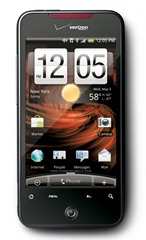 My new HTC Incredible phone has a 1Ghz Snapdragon processor in it. That’s faster than laptop computers were just a few years ago. That, and reading the US Air Force story (you have to wait for that a little longer…) reminded me of an interesting conversation with Zoho CEO Sridhar Vembu two years ago:
My new HTC Incredible phone has a 1Ghz Snapdragon processor in it. That’s faster than laptop computers were just a few years ago. That, and reading the US Air Force story (you have to wait for that a little longer…) reminded me of an interesting conversation with Zoho CEO Sridhar Vembu two years ago:
Given how mobile phones pack a whole lot of functionality in a tiny package, I have wondered if the ideal server farm is just tens of thousands of mobile phones packed together. It seems to me that the semiconductor technology behind mobile devices is far, far more power efficient than the stuff that goes in servers. Partly it is a backwards compatibility issue, with servers having to run code written all the way back to 1980s, while mobile phones simply didn’t exist that far back. Partly, it is also a function of how traditional client-server applications were architectural monoliths, compared to the deeply distributed “service-oriented architecture” that is common in web applications today.
With mobile phones approaching very respectable CPU & memory capacity, packaging them together as a server cluster makes a lot of sense. Linux can run on almost all of the modern CPUs common in cell-phones, and the mobile version of Java seems actually well-suited for server use, particularly for deeply partitioned, distributed applications. Lightweightness is actually an advantage in server software, just as it is in mobile software.
While I don’t know if anyone has implemented the idea, there are other experiments with using cheap but powerful hardware in non-traditional ways – most notably the US Air Force which concluded that Sony PS3 consoles running Linux provide powerful and dirt cheap computing power.
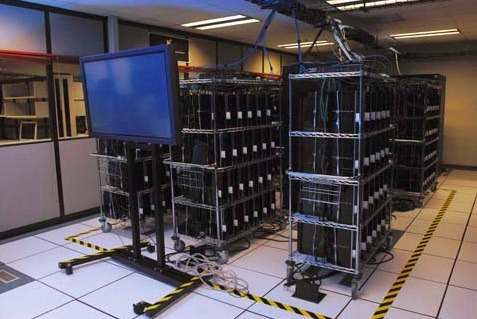
The above cluster contains 1,700 160GB PS3 units, and is a great example of cheap computing – except for a small glitch. A few month later Sony issued a firmware update that kills the ability to install Linux on the PS3. This won’t immediately turn the cluster into dumb game consoles, since the Air Force is not hooked into Sony’s network. Isolated from further patches the machines can still work as Linux computers – but swapping them out and repairs become increasingly difficult. Unless Sony reverses the decision (which is not out of question, given there are several lawsuits on the matter), the Air Force eventually ends up with a bunch of Game Consoles.
Which is not the end of the world – there’s an abundance of Flight Simulators for the PS3 🙂
(Full story @ Ars Technica)
(Cross-posted @ CloudAve)

Facebook Big Mac Attack – Not For Me, Thanks. Top 10 Reasons to …
 Oh, just what the Doctor has ordered: more junk food coming your way, left and right, from the social network that’s taking over the Internet: Facebook. McDonald’s will be the first advertiser taking advantage of Facebook’s soon-t0-be-releasing location feature.
Oh, just what the Doctor has ordered: more junk food coming your way, left and right, from the social network that’s taking over the Internet: Facebook. McDonald’s will be the first advertiser taking advantage of Facebook’s soon-t0-be-releasing location feature.
The first reaction from most is this will kill leading location-based services: Hey Foursquare, Time To Close That Round Of Funding Before Facebook Chops Off Your Head. Yes, probably true, but now I am more worried about Facebook users – all of us – then businesses, and not just as a defender of healthier diets. Greasy or not, it’s not the ads that worry my, it’s yet another level of thoughtless surrender we’ll soon be committing: broadcasting our location every step of the way.
Yes, I realize there may be social benefits from bumping into friends via Foursquare Facebook, but have you really considered the danger of letting the world know where you are every step of the way? While you think about it, also consider just whose hands you leave all that data in: not exactly the champions of privacy.
The Relationship Between Facebook and Privacy: It’s Really Complicated says Mathew Ingram @ GigaOM this morning, and I strongly disagree. There is nothing complicated about it. Facebook does not give a *** about privacy: it’s a concept CEO Mark Zuckerberg finds obsolete, simply does not believe in at all. Now, in reality, even Facebook caves in to demands of privacy, but they are either careless or incompetent, or both, plugging one security hole after another.
Three strikes and you’re out – I guess Facebook is exempt from that law, now that they are becoming the New Internet.
But people are actually worried about privacy implications to consider quitting Facebook entirely: 10 Reasons To Delete Your Facebook Account. It’s a post worth reading in full, here are just the headings:
10. Facebook’s Terms Of Service are completely one-sided
9. Facebook’s CEO has a documented history of unethical behavior
8. Facebook has flat out declared war on privacy.
7. Facebook is pulling a classic bait-and-switch
6. Facebook is a bully
5. Even your private data is shared with applications (you are no longer trusting Facebook, but the Facebook ecosystem).
4. Facebook is not technically competent enough to be trusted.
3. Facebook makes it incredibly difficult to truly delete your account.
2. Facebook doesn’t (really) support the Open Web.
1. The Facebook application itself sucks.
 I must admit for all my grumpiness I have not deleted my account, and I likely will not (not that it would be easy ). I resisted joining Facebook in the first place, was probably a year or so late, and even when I joined, I created a separate email account just for FB, and disallowed saving any Facebook cookies (remember Beacon? ). But resistance became just too inconvenient… so now I am in. That said I am not particularly active on Facebook, hardly maintain my profile and generally my presence there is a mess (this is where my marketing friends can jump in chastizing me for the lost opportunity). I’m only sticking around because Facebook has proven to be too pervasive, it is everywhere and (almost) everyone is on it. So yes, it is great to find long-lost friends and even discover some new ones. But that’s all for me, and I seriously suggest you all reconsider the level of your presence.
I must admit for all my grumpiness I have not deleted my account, and I likely will not (not that it would be easy ). I resisted joining Facebook in the first place, was probably a year or so late, and even when I joined, I created a separate email account just for FB, and disallowed saving any Facebook cookies (remember Beacon? ). But resistance became just too inconvenient… so now I am in. That said I am not particularly active on Facebook, hardly maintain my profile and generally my presence there is a mess (this is where my marketing friends can jump in chastizing me for the lost opportunity). I’m only sticking around because Facebook has proven to be too pervasive, it is everywhere and (almost) everyone is on it. So yes, it is great to find long-lost friends and even discover some new ones. But that’s all for me, and I seriously suggest you all reconsider the level of your presence.
And even if you are very disciplined in your Facebook usage (are you?) read #5 above again. Just yesterday I was setting up my shiny new Android phone: I decided to enable location information, for the benefit of Google Maps and other really useful services. But… but..but … I am also tweeting and communicating in a zillion other ways from that same device, and although I will try to be careful about reviewing the permissions of every single app, it’s likely I will slip sooner or later.
So think about this: in this API-driven intertwined ecosystem of mobile and web services, just how certain can you be that Facebook (and others) won’t get information you never intend to give them in the first place, no matter how careful (you think) you are?
Updates:
(Cross-posted @ CloudAve)

iPhone? Android? It’s All Irrelevant when you Can’t Get a Signal
Will iPhone users move to Verizon? – goes the speculation, based on a study published @ Fortune showing AT&T drop calls 3 times as frequently as Verizon.
From my vantage point even dropped calls would be a luxury – meaning you can get a strong enough signal to place calls in the first place. Apparently I live at the end of the World. Sometimes I tell friends if Friedman is right and the World is really flat, this is where you fall off the edge. 🙂
But it’s not really the “end of the world” – Pleasanton is (was) was hometown to software giants like PeopleSoft, Commerce One, Oracle, Workday, or to name a few more traditional businesses, grocery chain giant Safeway, or mega-HMO Kaiser Permanente. Yet this is what AT&T’s coverage map looks like:
Ad no, we’re not even talking about 3G data, this is for voice calls. Now, being in the “good” (on the boundary of moderate) zone may not look so bad, until we look at how At&T defines good voice coverage:
Should be sufficient for on-street or in-the-open coverage, most in-vehicle coverage and possibly some in-building coverage. This AT&T owned network provides GSM, GPRS, and EDGE service
Possibly some in-building coverage? Calling that good? How pathetic. But let’s look at other carriers’ definition of “Good”. T-Mobile:
You will likely be able to place calls outdoors, in a car, and occasionally indoors.
Occasionally? What are they smoking calling this “good” coverage? Hm, let’s check Sprint, home to the uber-super HTC EVO 4GS and the superfast Overdrive 4G hotspot:
You should generally receive a signal strength sufficient to make calls outdoors, in a car and in some buildings.
How Pathetic. All these companies must speak a different version of English, where “good” means “no can do” in most buildings. Insanity.
That only leaves Verizon, which has solid red (best coverage) in my entire area. Which makes my choice easy: all those comparative reviews of the iPhone 3G and 4G, HTC Incredible, Nexus One, HTC EVO 4G are so irrelevant, if I can’t get a signal. HTC Incredible (Android) and Verizon, here I come. By default.
(Cross-posted @ CloudAve)

Google Cheese
Yes, this is decidedly cheesy: a microblogging app that’s intentionally buggy. Full of holes, like it’s namesake, the cheese. For educational purposes. But I think they forgot something really important:
Yes, I know, proper pairing would be wine and cheese, but it doesn’t rhyme as well as Jarlsberg & Carlsberg. Besides, this way Google could use the tagline: Probably the Best Bugs in the World.
Besides, this way Google could use the tagline: Probably the Best Bugs in the World.
(Cross-posted @ CloudAve)
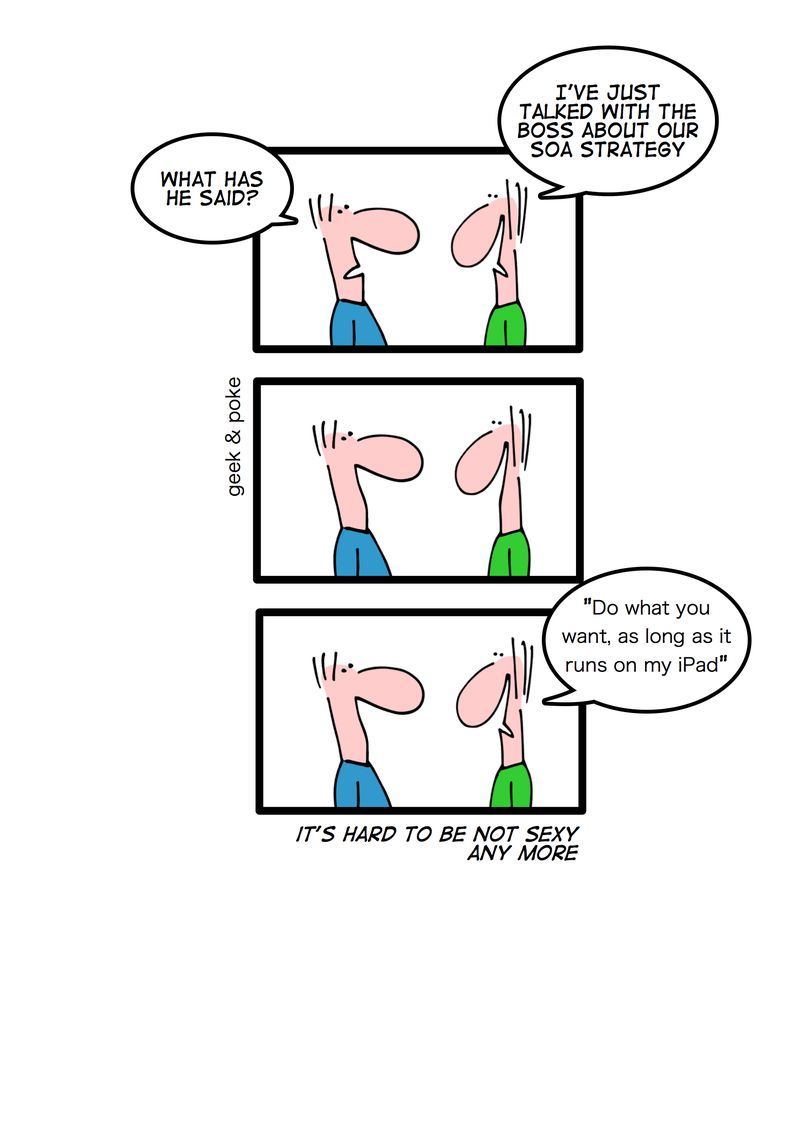
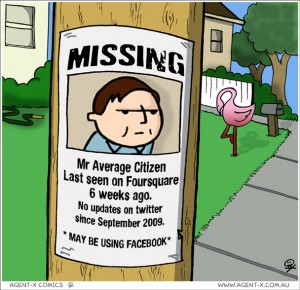
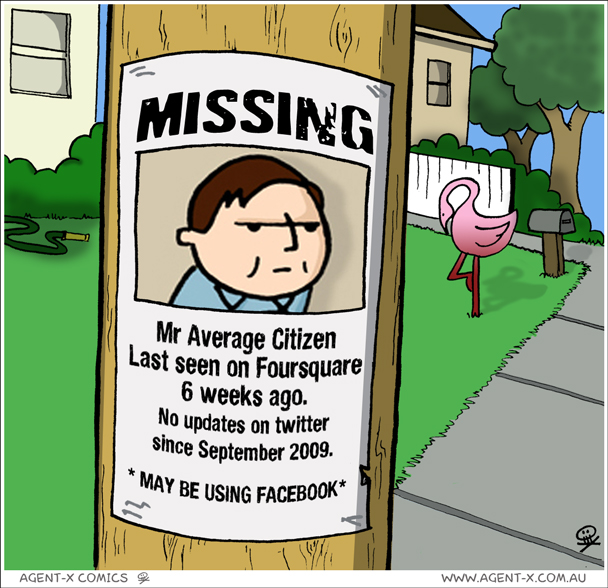
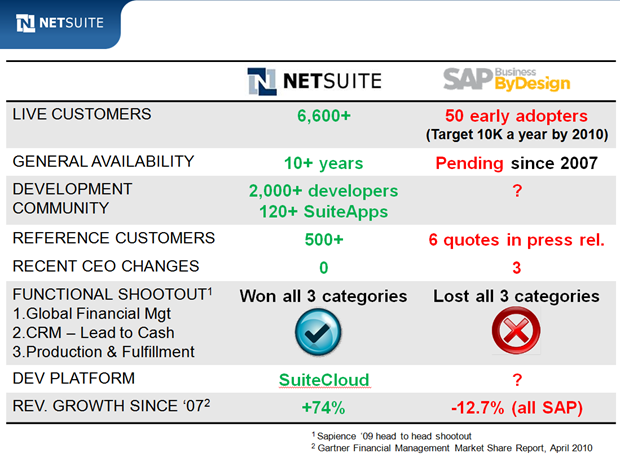
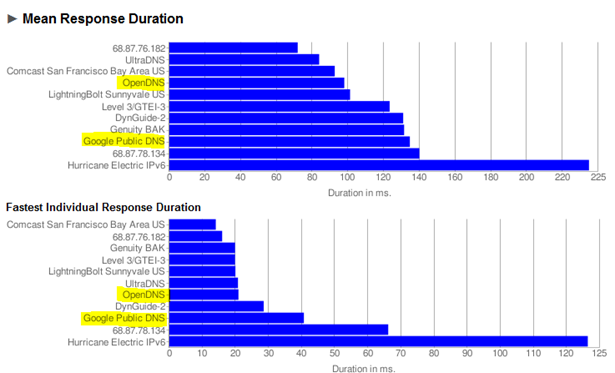
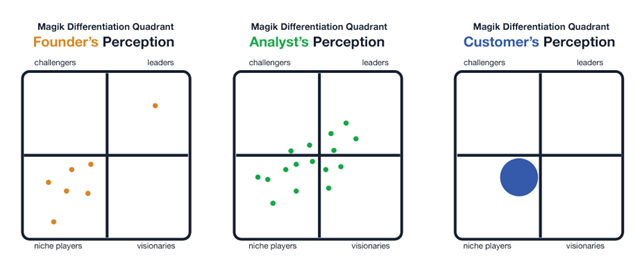





Recent Comments